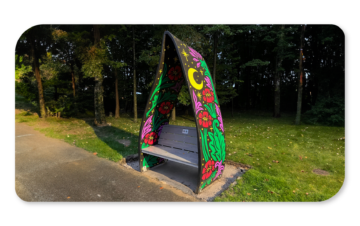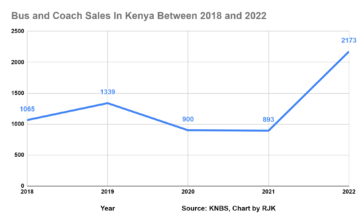Sign up for daily news updates from CleanTechnica on email. Or follow us on Google News!
The US solar industry has suffered a spate of delayed or outright canceled projects in recent years, but that doesn’t mean the end of the line. The community solar movement is still going strong, providing local ratepayers with access to solar power and the potential for reducing their utility bills, too. A new agrivoltaics project in Iowa also illustrates how community solar projects can provide additional benefits to local businesses and the environment.
Community Solar Meets Agrivoltaics
Community solar is the solution for households that can’t install their own ground-mounted or rooftop solar arrays. Shade, financial barriers, and access to suitable space are the most common obstacles.
Community solar projects knock down those walls. They enable local residents to subscribe to a purpose-built solar array, located in their area.
Back when solar power was expensive, community solar subscribers could expect to pay a premium on their electricity bills. Nowadays solar is competitive with other power sources in many markets, enabling some community solar projects to offer electricity at a lower rate than the local utility.
The SunSmart Ames Community Solar Project in Ames, Iowa, is a good example of a community solar that incorporates agrivoltaics for additional benefits. SunSmart was commissioned in 2020, winning top honors from the news organization Environment + Energy Leader. The relatively small 10-acre, 2-megawatt array sits near the Ames Municipal Airport, where it is presumably shielded from the land use objections that are dogging rural solar proposals these days.
The SunSmart project crossed the CleanTechnica radar just last week, when the local news organization Ames Tribune reported that about 50 sheep have been recruited to trim the grass in the solar array. The solar grazing element puts SunSmart into the category of agrivoltaics, which refers to the dual use of land for farming and power generation.
The Agrivoltaic Effect
As reported by the Tribune, the Electricity Department of the city of Ames is expecting SunSmart to be the model for additional solar projects at a much a larger scale. It remains to be seen if agrivoltaics comes along for the ride, but local residents are seeing the benefits in their own community. That could help smooth the way for future projects to gain public approval.
The “solar sheep” are getting a big thumbs up from Ames. Reducing the cost of mowing is one benefit. Avoiding the use of fossil fuel-powered mowing equipment is another.
Agrivoltaic advocates also point out that when livestock grazes, they push seeds into the ground, improving the soil, promoting the growth of more vegetation, and enabling the land to absorb more carbon (check out more solar farming stories here).
With a local farmer supplying the sheep, the SunSmart array also illustrates how agrivoltaics can support local businesses.
Scaling Up Agrivoltaics
Another factor in support of up-sizing agrivoltaics is the SunSmart developer, ForeFront Power. The firm won a competitive bid to construct the solar array, and they had it up and running in three months. The quick turnaround is no surprise considering the company’s 15-year track record and long roster of clients, including other community solar projects with agrivoltaic elements.
ForeFront flickered briefly across the CleanTechnica radar screen all the way back in 2018, when the company described its model for installing rooftop solar with no up-front costs.
We’ll be paying more attention from now on. ForeFront is a wholly owned subsidiary of the global energy and investment firm Mitsui & Co. Ltd., operating in North America through its MyPower Corp. investment branch.
Another firm under the MyPower umbrella is the community solar startup Solstice Power Technologies. The company launched in 2016 with a focus on repurposing brownfields and other non-agricultural land for solar development, and it is incorporating agrivoltaics into its business.
Building Support For Rural Solar, With Agrivoltaics
Solstice advises that the term “agrivoltaics” is only 11 years old and the research phase is still ongoing in terms of best practices. However, the available evidence is beginning to show that agrivoltaics can benefit farmers by enhancing yields for certain crops and improving pollinator services, in addition to bringing in new revenue.
Building public support for agrivoltaic projects presents another set of challenges. Researchers are also beginning to focus on public outreach, as illustrated by a project under way at Iowa State University that centers around a new a 10-acre, 1.375-megawatt solar array under the purview of the firm Alliant Energy. The project, a first-of-its-kind for the state of Iowa, was funded with a $1.8 million assist from the Energy Department.
The new array will support agricultural activities including beekeeping, vegetable and fruit crops, and pollinator habitats.
“The hope is that integrating direct local advantages with solar energy will increase support for such projects,” observed Iowa State University in a preview of the project last year.
Anne Kimber, the director of the school’s Electric Power Research Center, added that “it’s important to find opportunities for these projects to benefit people, beyond just providing renewable electricity.”
Agrivoltaics At Work
The solar array was completed last October, which makes 2024 the first planting season. In a press release marking the occasion, ISU noted that the school’s energy transition efforts will benefit from the clean kilowatts.
“Thanks to our Alliant Energy partners, the solar farm also will serve as a one-of-a-kind agricultural setting for our faculty, staff and students to explore solar energy topics through research, education and extension and outreach,” added ISU president Wendy Wintersteen.
“It’s a functioning solar farm designed from the start to allow us access to teaching, research and extension possibilities,” observed Daniel J. Robison, the dean of the College of Agriculture and Life Sciences at ISU.
The Power Of The Dual Use Alliance
The ISU project is on a five-year timetable, so it will be a while before enough evidence accumulates to make a solid case for agrivoltaics at a large scale. Still, ISU points out that the 10-acre solar farm sits on school property, at its agricultural complex. In terms of farmland use and infrastructure, it is already showcasing how dual-use agriculture can fit into other, more traditional farming operations.
The complex houses several kinds of livestock and it also hosts the Ag450 Farm, described as “the only student-managed farm at the nation’s land-grant schools.”
Also helping things along in the public relations department is the partnership with Alliant, an S&P 500 company. “The company is committed to voluntarily sharing their sustainability strategy and governance, environmental footprint and emissions reductions, social metrics and community investments,” Alliant says of itself.
The new array is Alliant’s first agrivoltaics project, and the company already anticipates deploying it as a showcase to attract additional clients. In addition to building and operating the array, Alliant is partnering on research and education programs at the site.
Follow me @tinamcasey on Bluesky, Threads, Instagram, and LinkedIn.
Image (screenshot): Sheep graze in a community solar array that serves as a showcase for agrivoltaics (courtesy of City of Ames, via Instagram).
Have a tip for CleanTechnica? Want to advertise? Want to suggest a guest for our CleanTech Talk podcast? Contact us here.
Latest CleanTechnica.TV Videos
[embedded content]
Advertisement
CleanTechnica uses affiliate links. See our policy here.
- SEO Powered Content & PR Distribution. Get Amplified Today.
- PlatoData.Network Vertical Generative Ai. Empower Yourself. Access Here.
- PlatoAiStream. Web3 Intelligence. Knowledge Amplified. Access Here.
- PlatoESG. Carbon, CleanTech, Energy, Environment, Solar, Waste Management. Access Here.
- PlatoHealth. Biotech and Clinical Trials Intelligence. Access Here.
- Source: https://cleantechnica.com/2024/06/09/agrivoltaics-hitches-a-ride-on-the-community-solar-train/
- :has
- :is
- :where
- ][p
- $1.8 Million
- $UP
- 1
- 11
- 2016
- 2018
- 2020
- 2024
- 400
- 50
- 500
- 8
- a
- access
- across
- activities
- added
- addition
- Additional
- additional benefits
- advantages
- Advertise
- advocates
- Affiliate
- Agricultural
- agriculture
- airport
- All
- allow
- along
- already
- also
- alt
- america
- an
- and
- and infrastructure
- Another
- anticipates
- approval
- ARE
- AREA
- around
- Array
- AS
- assist
- At
- attention
- attract
- available
- avoiding
- back
- barriers
- BE
- been
- before
- Beginning
- benefit
- benefits
- BEST
- best practices
- Beyond
- bid
- Big
- Bills
- bluesky
- Branch
- briefly
- Bringing
- Building
- business
- businesses
- but
- by
- CAN
- canceled
- carbon
- case
- Category
- Center
- Centers
- certain
- challenges
- check
- City
- clean
- cleantech
- Cleantech Talk
- clients
- CO
- College
- comes
- committed
- Common
- community
- company
- Company’s
- competitive
- Completed
- complex
- considering
- construct
- content
- Corp
- Cost
- Costs
- could
- courtesy
- crops
- Crossed
- Daniel
- Days
- Delayed
- Department
- deploying
- described
- designed
- Developer
- direct
- Director
- Doesn’t
- down
- dual
- Education
- Electric
- electricity
- element
- elements
- embedded
- Emissions
- enable
- enabling
- end
- energy
- enhancing
- enough
- Environment
- environmental
- equipment
- Ether (ETH)
- evidence
- example
- expect
- expecting
- expensive
- explore
- extension
- factor
- farm
- farmers
- farming
- farmland
- financial
- Find
- Firm
- First
- fit
- Focus
- Footprint
- For
- forefront
- fossil
- from
- functioning
- funded
- future
- Gain
- generation
- getting
- Global
- going
- good
- governance
- grass
- Ground
- Growth
- Guest
- had
- Have
- help
- helping
- Honors
- hope
- hosts
- households
- houses
- How
- However
- HTML
- HTTPS
- if
- illustrates
- important
- improving
- in
- Including
- incorporates
- incorporating
- Increase
- industry
- Infrastructure
- install
- installing
- Integrating
- into
- investment
- Investments
- Iowa
- IT
- ITS
- itself
- just
- kinds
- knock down
- Land
- large
- larger
- Last
- Last Year
- launched
- Life
- Life Sciences
- Line
- links
- local
- local businesses
- located
- Long
- lower
- Ltd
- make
- MAKES
- many
- Markets
- marking
- max-width
- me
- mean
- Meets
- Metrics
- million
- model
- months
- more
- most
- movement
- much
- municipal
- Nations
- Near
- New
- news
- no
- North
- north america
- noted
- now
- nowadays
- objections
- observed
- obstacles
- occasion
- october
- of
- offer
- Old
- on
- ONE
- One-of-a-Kind
- ongoing
- only
- operating
- Operations
- opportunities
- or
- organization
- Other
- our
- out
- outreach
- outright
- own
- owned
- partnering
- partners
- Partnership
- Pay
- paying
- People
- phase
- Planting
- plato
- Plato Data Intelligence
- PlatoData
- player
- podcast
- Point
- points
- policy
- possibilities
- potential
- power
- practices
- Premium
- presents
- president
- press
- Press Release
- Preview
- PRNewswire
- Programs
- project
- projects
- promoting
- property
- provide
- providing
- public
- Public Relations
- Push
- Puts
- Quick
- radar
- recent
- record
- reducing
- reductions
- refers
- relations
- relatively
- release
- remains
- Renewable
- Reported
- research
- researchers
- residents
- revenue
- Ride
- roster
- running
- Rural
- S&P
- S&P 500
- says
- Scale
- School
- Schools
- SCIENCES
- Screen
- Season
- see
- seeds
- seeing
- seen
- serve
- serves
- set
- setting
- several
- sharing
- sheep
- show
- showcase
- showcasing
- site
- sits
- small
- smooth
- So
- Social
- soil
- solar
- solar energy
- Solar Power
- solid
- solution
- some
- Sources
- Space
- Staff
- start
- startup
- State
- Still
- Stories
- strong
- Students
- subscribe
- subscribers
- subsidiary
- such
- suffered
- suggest
- suitable
- supplying
- support
- surprise
- Talk
- Teaching
- Technologies
- term
- terms
- than
- that
- The
- The State
- their
- These
- they
- things
- those
- three
- Through
- timetable
- tip
- to
- too
- top
- Topics
- track
- track record
- traditional
- Train
- transition
- tv
- umbrella
- under
- university
- Updates
- us
- use
- uses
- utility
- vegetation
- via
- Video
- voluntarily
- want
- was
- Way..
- week
- when
- which
- while
- wholly
- will
- winning
- with
- Won
- year
- years
- yields
- youtube
- zephyrnet










